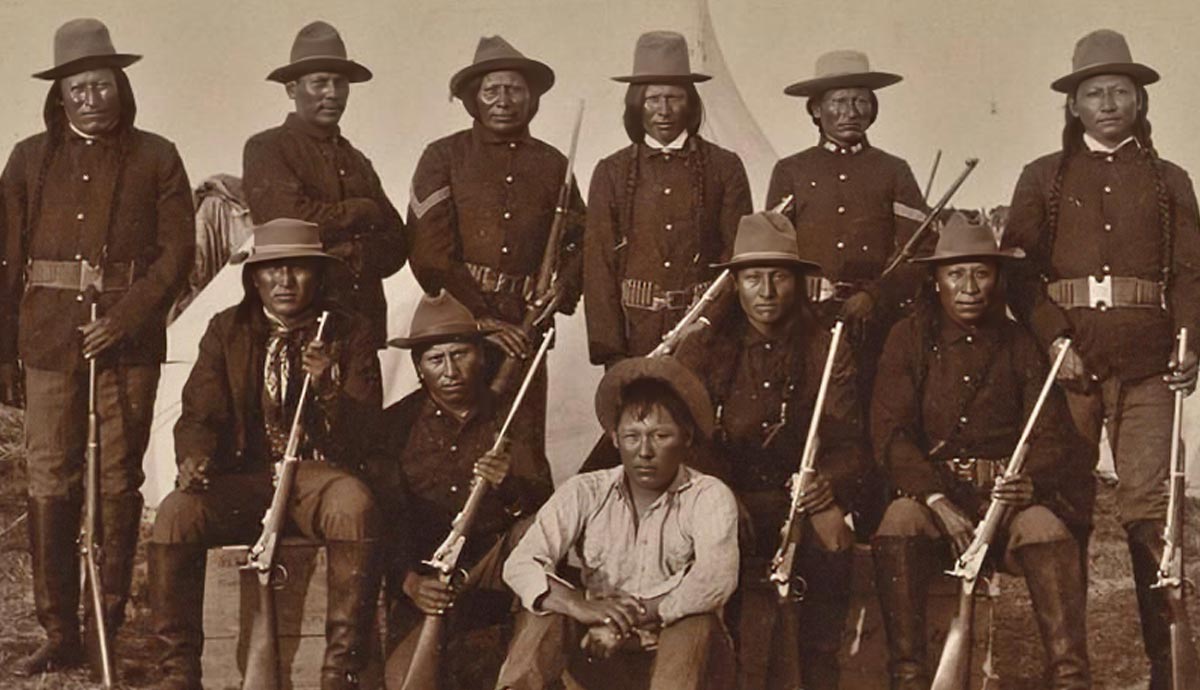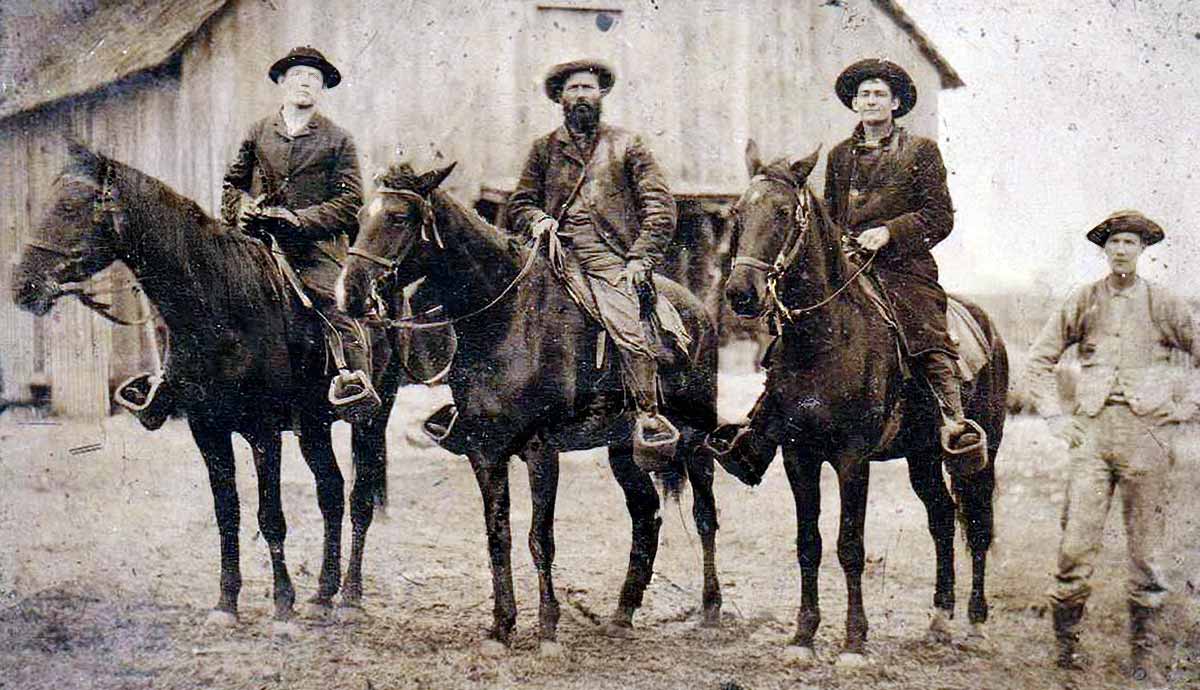
Even after the Civil War, the American West still represented a substantial-sized territory. The bulk of the U.S. Army occupied former Confederate states, leaving only a small force out West. Some tribes used the War’s distraction to launch raids against settlers, forts, and wagon trains. With the creation of the Indian Scout companies, a group now existed that knew the terrain, the culture, and the languages of the tribes. Such a group proved necessary given their tough, resourceful opponents.
The Motivation

An important question is why Native Americans served with their primary opponents. The clashes between the Army and the tribes were often violent or bloody. Innocents on both sides perished.
Like anyone, Scouts needed to make money. Scouts received the same wages as active-duty Army soldiers at $13 a month. Their service may have been their first time dealing with whites, seeing how they lived or conducted business. Revenge against enemy tribes and keep their warrior traditions alive. As more tribes got placed on reservations, the U.S. government encouraged pastoral traditions like farming or ranching. Some Native Americans, like Quanah Parker, adapted very successfully.

Scouts didn’t always fight-they traveled to militant bands, seeking to convince them not to fight. Though not always successful, some tribes listened and moved to a reservation, avoiding bloodshed. Also, the guides proved helpful with their usually unmatched knowledge of the terrain. The Army, desperately short on experts, needed people with the right skills. The fact that the Army showed willingness to pay a soldier’s salary said it all.
The Challenges

The Scouts faced hardships while performing an already difficult job. Violence and conflict could be expected, helping the U.S. Army track, fight, and negotiate with various tribes. Often, the Army used tribal rivalries to play off tribes against each other. This played to the Army’s advantage.
The Scouts often dealt with prejudice or hostility from Americans. Seen as savages or “redskins”, sometimes their employers deemed them inferior. Such treatment also came from American society, not just the military. By their very culture, the Scouts needed to surmount language or cultural differences and vice versa.
Another factor that drove Army officers mad was discipline. By their nature, the Scouts fought bravely but as individuals, not as a unit. They used the Native hit-and-run tactics, which worked but went against the grain. Formations needed discipline and formation to fight as a unit. Only in the 1890s, with wholly Native cavalry troops, was this enforced.
Roles and Major Events

The Indian Scouts served between 1866 and ended in the early 1920s. Many enlisted for a campaign’s duration or a three-month term. The usual Indian Scouts unit contained fifty Scouts, led by a cavalry officer and a civilian interpreter. Besides fighting, Scouts located good campsites or carried messages. Indian Scouts participated in many of the battles from the 1860s, including the Battle of Little Big Horn, the 1880s Apache Wars, and the 1916 Mexico Expedition.
During the 1876 Battle of Little Bighorn, perhaps five or more Scouts with Custer died in battle. But, a Scout Force numbering only 250 Crow and Shoshone warriors fought off 1,300 Lakota. This saved the remnant of the 7th Cavalry, who dug quick defenses. During the Apache Wars, notably famous for legendary Geronimo, the Scouts provided intelligence and defense against the guerilla tactics the Apache used. The U.S. Army had little knowledge of these tactics.
Famous Scouts

In 1866, Congress allocated the U.S. Army 1,000 Indian Scouts annually. Like any unit, some individuals stood out. By their end, the Scouts won sixteen Medals of Honor for bravery or outstanding actions. Among the famous Scouts are Ashishishe or Curley. This Crow Scout served with George Custer, participating in the Little Bighorn until Custer’s Last Stand. Ordered away, he didn’t fight but witnessed the defeat of Custer’s command. Ashishishe is considered the only survivor of the battle.
Sergeant John Ward, a Black Seminole, won the Medal of Honor in 1875. He enlisted in Texas, serving in the 9th Infantry. While on patrol along the Pecos River on April 25, 1875, his group fought with twenty-five Natives. Sergeant Ward and two others charged their opponents, spoiling their attack.
The U.S. Army Indian Scouts fought fiercely alongside comrades seen as tribal enemies, and they served well. Despite alienation or racism, the Scouts persisted well past the time of the Old West.











